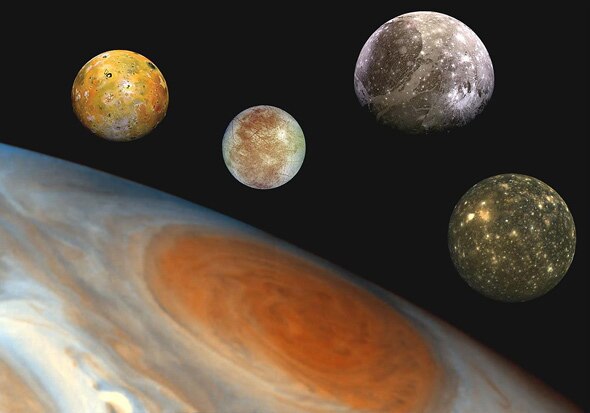Create a free profile to get unlimited access to exclusive videos, sweepstakes, and more!
Crash Course Astronomy: Jupiter’s Moons

One of the first objects Galileo observed with his new telescope was the planet Jupiter, shining high in the skies over Italy in 1610. When he did, he was astonished to see three little stars in a row next to it, all invisible to the naked eye! These three stars stayed near the bigger planet, moving around it. A fourth one appeared a few days later, and he knew what he was seeing: a revolution.
Well, what he was really seeing were moons, each orbiting the planet. But here was absolute proof that not every object in the heavens orbited the Earth, and it was the death knell of geocentrism, the idea that had ruled our understanding of the Universe for thousands of years.
We now know that these moons are worlds in their own rights—the biggest four would be naked-eye objects if Jupiter’s brilliant light didn’t swamp them out—and are fascinating, amazing places.
Which is why I decided they should get their own episode of Crash Course Astronomy!
If I ever needed a reminder that astronomy is a living, evolving science, this episode was it. After I write each episode, it takes a few months before it’s edited, recorded, the graphics prepped, and it’s ready to go live. In this case, between the time we recorded it and the time it went up, astronomers found really good evidence of a salt water ocean under the surface of Ganymede, Jupiter’s largest moon.
This idea has been around a while, and there was some evidence for it before, but the new work is much more convincing, and gives us some details about the subsurface ocean. I mention the older work in the episode, but there simply wasn’t time to get the new results into it, so we had to leave it as is.
While this might frustrate me as someone making a video series, as a scientist and a science communicator—heck, as a living, breathing human being—this thrills me! An entire ocean, as old as Earth, and it’s been hidden from view this whole time. What wonders are there, deep inside the solar system’s largest moon?
We don’t know … yet. We will someday, I’m quite sure. After all, discovery is what science is all about, learning more about the Universe around us. If that means a video I make winds up being something less than accurate due to a coincidence of thing, hey: That’s a sacrifice I’m more than willing to make.


























